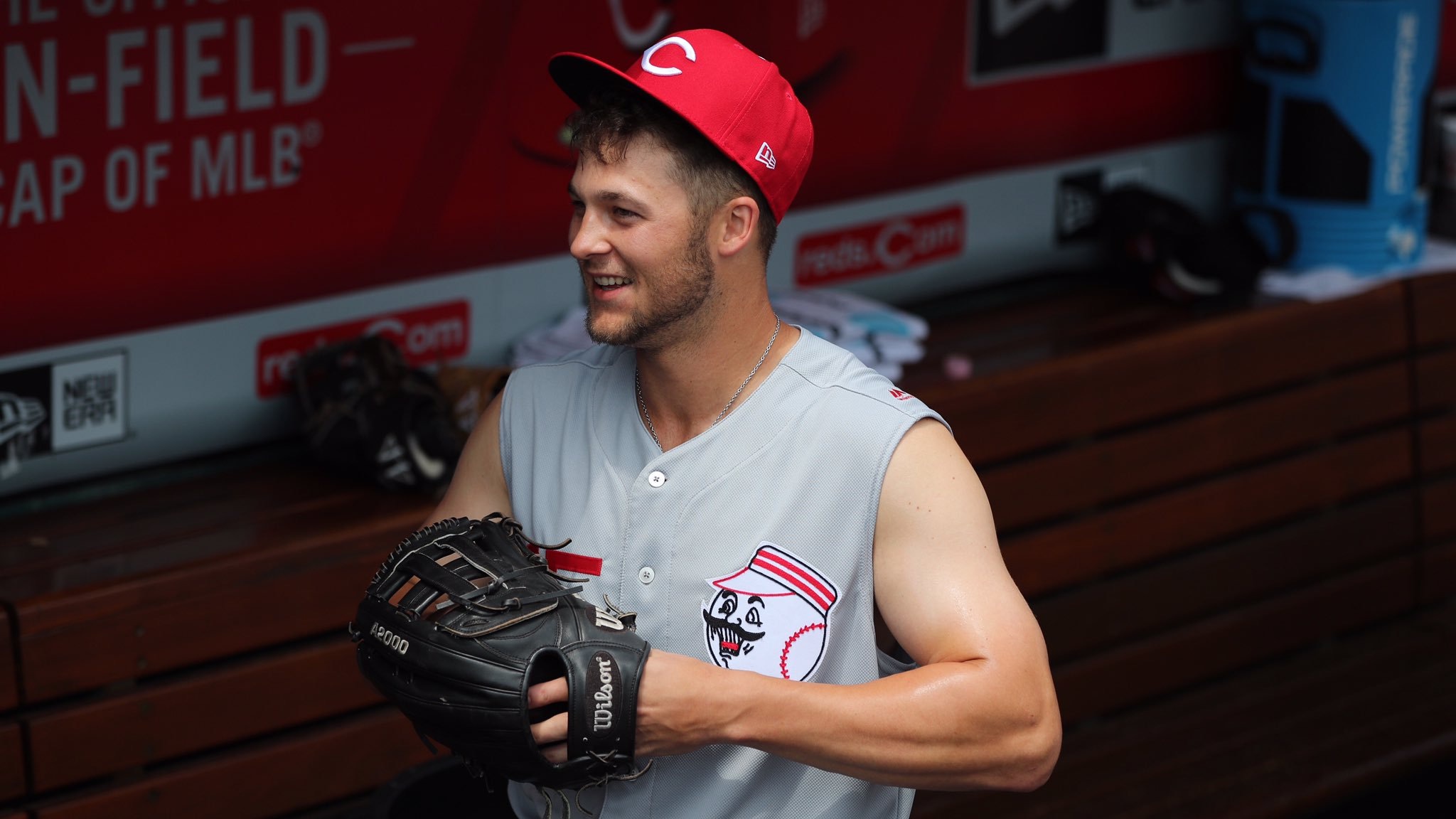
With the signing of Mike Moustakas, the Reds have cemented their centerfielder of the future. No, Moustakas won’t be bumbling around the outfield; instead, it appears Nick Senzel will patrol the grassy knoll in centerfield for the next several years.
A lifetime infielder before last season, Senzel was rated as the best defensive third baseman in the minor leagues in 2017 by Jim Callis of MLB.com. After switching to second base in 2018, Baseball America graded Senzel as the best defensive two bagger in the International League. What did the Reds do? They made him a centerfielder.
They had good reason. Scooter Gennett and Eugenio Suarez were coming off All-Star seasons at second and third base. The Reds had moved on from Billy Hamilton and failed to replace him in the offseason. In house, Scott Schebler masqueraded as a centerfielder when he more naturally fit at a corner. With a bat ready to contribute, Senzel needed a position, and the Reds had an open spot.
With Senzel’s athleticism, he seemingly had the speed to cover a relatively small centerfield at Great American Ball Park. It took eight games to learn the position in AAA before Senzel debuted for the Reds on May 4 last season.
The results on defense were mixed. Senzel’s arm rated well, but overall, he was a slightly below-average defender based on both UZR (-1.2) and DRS (-1). That’s still quite impressive when you consider he had not played the outfield in an official minor league game until 2019. Despite the odds, Senzel held his own.
Still, going from the best at one position to averagish at another is a downgrade. Senzel was heralded as an elite prospect, not solely for his bat, but because he had few if any deficiencies. Taking him away from the infield potentially hurts his overall value, but the Reds are betting the team is better with him, Moustakas, and Suarez in the lineup every day. That means Senzel must provide some value in the outfield.
He certainly has the tools to play centerfield well. According to Baseball Savant, Senzel had the 26th fastest sprint speed in all of baseball. Even with his inexperience, Senzel used efficient routes to track down batted balls, improving as the season went along. We might expect his reaction time, his weakness on jumps off the bat, to improve in year two of learning the position.
Senzel will likely hit better next season; he dominated minor league pitching and showed flashes in his rookie year with the Reds. With Moustakas and Suarez locking down Senzel’s more natural positions, the Reds are betting the athletic youngster becomes an above average centerfielder as well. If he does, Senzel could reach his All-Star potential, a huge boon to the Reds playoff chances in 2020 and beyond. Regardless, on Monday, the Reds added their long-term second baseman and determined the future of their best young player with one signing.



Hope Senzel stays healthy, bats leadoff every game and scores 110 runs.
The recovery from his shoulder issue worries me about him hitting. But I was pretty impressed with his aggressiveness and how well he took to the outfield.
By the way, it still boggles my mind that the Reds had apparently decided Senzel was no option at shortstop, after him playing there for one spring training. I thought his athleticism would have played well there. And it should be easier to find an outfielder than a shortstop. … I mean, how high was the bar set defensively when Peraza could have been the starter there?